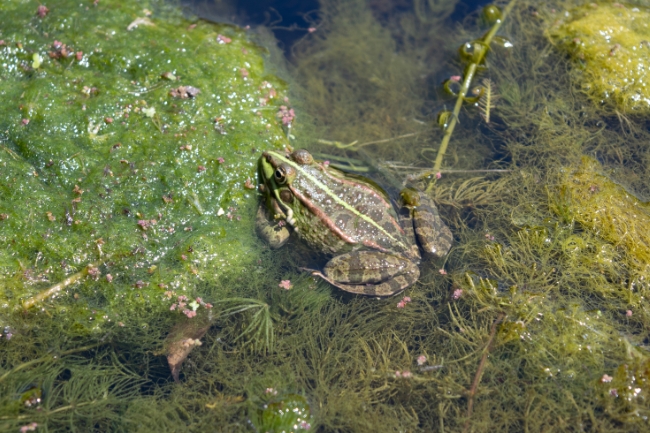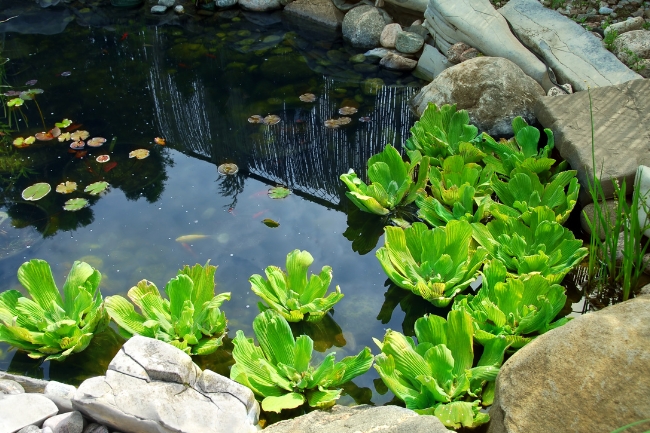Frogs use a number of different techniques to find ponds, including using their sense of smell, the presence of prey and humidity levels. Many frogs also remember where ponds are, returning to them year after year.
Do frogs need ponds?

Not all frogs need ponds. Whether frogs live or breed in ponds depends very much on the species. Most are associated with some kind of water, however, this may be something as small as a wet hollow within a tree stump, or as temporary as a puddle.
| Frog Species | Preferred Pond Type | Cues Used to Locate Ponds | Additional Information/Explanation |
|---|---|---|---|
| Wood Frog | Vernal Pools | Sound of melting snow | Melting snow provides important auditory cue for migration |
| Red-eyed Tree Frog | Tree Holes | Visual cues | Brightly colored eyes help locate tree holes for breeding |
| African Clawed Frog | Temporary Pools | Chemical signals in rainwater | Sensitive to chemical cues released by rainwater in temporary pools |
Yet, there are many species of frog and toad that use pond as an important feeding and breeding ground. For these species finding ponds can be a challenge, particularly as many ponds disappear over time, filling in with sediments.
How do frogs find ponds?
If you’ve ever created a new pond, you may have been surprised how quickly amphibians, such as frogs, may have appeared. While this may be unsuprising when the new pond neighbours an existing pond, it can be particularly amazing when there are no frog-friendly premises nearby.
So how do these frogs know where the new pond is? Without the ability to fly, and only small legs for travelling long distances, it really seems like some kind of froggy-magic. Yet, there is a bit of science behind a frog’s ability to hone in on their new homes.
| Frog Species | Navigational Behavior | Additional Information/Explanation |
|---|---|---|
| African Bullfrog | Celestial Navigation | Utilizes the moon and stars for orientation during long-distance travel |
| Poison Dart Frog | Memorized Landmarks | Relies on visual memory of specific landmarks to navigate in its range |
| Green Tree Frog | Visual Compass | Uses visual cues like tree shadows and landmarks for orientation |
Smell
Frogs have a sense of smell, just like humans. They have olfactory receptors that allow them to pick up certain chemicals by breathing through their external nares and taking scents into their mouths. It is thought that they can smell chemicals coming from the water, and use this to navigate their way to it.

Prey
Insects are a common part of pond life, from those that live below the water, to those that live above it. Many of these insects have an adult form that can fly, such as dragonflies, mosquitos and water beetles. For these species flying over waterbodies is a great way to find them. Once at the waterbody, insects can multiply quickly if the conditions are good enough.
Most frog species are generalist feeders, and will eat almost anything they can get their mouths around. Like many animals, they are naturally drawn towards places with higher prey densities. Often this may be in and around ponds.
Humidity
Humidity refers to moisture levels carried in the air. The humidity levels naturally fluctuate over time and in different areas. These levels tend to be higher around waterbodies, such as ponds, as the water in the pond evaporates and rises into the air.
It’s believed that frogs and toads are able to sense these changing humidity levels, and then travel towards higher humidity in search of suitable wetlands.
Memory
Most frog species are not fully aquatic, and will spend part of their time in the water and part outside. For many species this means heading to ponds during the breeding season, and spending the rest of the time on land, hunting insects in meadows, among leaf litter and in other locations.
It’s surprising how far frogs are able to roam, with common frogs found to travel 500m and common toads travelling up to 5km. During their travels they may come across suitable places to breed. Like many animals frogs are able to remember suitable locations and come back to them during the breeding season.
Amazingly some species of frog will even remember the location of the pond they were born in, returning to it year on year to breed. Common toads are particularly well-known for this, often forming mass migrations. Sadly, when ponds are filled in, many toads will still return to the same spot, looking for the place they lived their lives as tadpoles.
Do frog ponds need filters?

Water quality is very important for frogs, as they have thin skin and can easily absorb contaminants within the water. Frogs also breathe through their skin, and can use this technique to breathe underwater.
However, oxygen-levels need to be high enough to allow them to drew enough oxygen from the water. Often when waterbodies are high in sediments and nutrients, the oxygen levels can plummet as algae grows within the water.
While filters can be an option, aquatic plants will carry out the same work, cleaning up the water and pumping out oxygen.
Also read: Do Frogs Have Hair? What is Frog ‘Hair’ Exactly
Do frogs hibernate in ponds?
Most frogs will spend their time hibernating on land, but usually underground, or buried within dirt. Some frogs and toads will hibernate in the silt at the bottom of ponds, however, this is less usual than hibernating on land.

How to make a frog-friendly pond?
When it comes to encouraging frogs into your ponds, the good news is they don’t need much encouragement. While some people choose to bring frogs in from elsewhere, either as frogspawn or as adults, in most cases there’s no need. The main thing is to make your pond suitable for when frogs do turn up.
Frogs, not fishes
One key recommendation is to avoid introducing fish to a pond. Fish will eat frogspawn and tadpoles, meaning that frogs will struggle to survive. Additionally, if you have pet fish that need feeding, the addition of fish food to the water can cause it to become high in nutrient levels, murky and inhospitable to other life.
Plants
Though frogs don’t eat plants in their adult form, tadpoles often eat plant matter, algae and other debris. Plants are also important for shelter, keeping frogs safe from predators, and allowing them to hide from prey when they want to feed.
Plants are also a key part of the pond ecosystem, underwater plants help introduce oxygen into the water, and are great breeding grounds of insects. The more insects, naturally, the more frogs.

Entry/exit
Something few people think of is the need to allow wildlife to step into and step out of their ponds. While most frogs will easily drop into a pond, no matter the fall, they may struggle to get out again if there isn’t a shallow slope for them to hop out on. Although some frogs spend all their time in the water, most will need to leave the water at some point.
Another important entry and exit will be to allow them to get in and out of the place where the pond is located. High garden walls can mean it’s difficult for frogs even to access the ponds. Gaps in the bottom of fences, tunnels created through walls, can all help wildlife get in and out of your garden.

